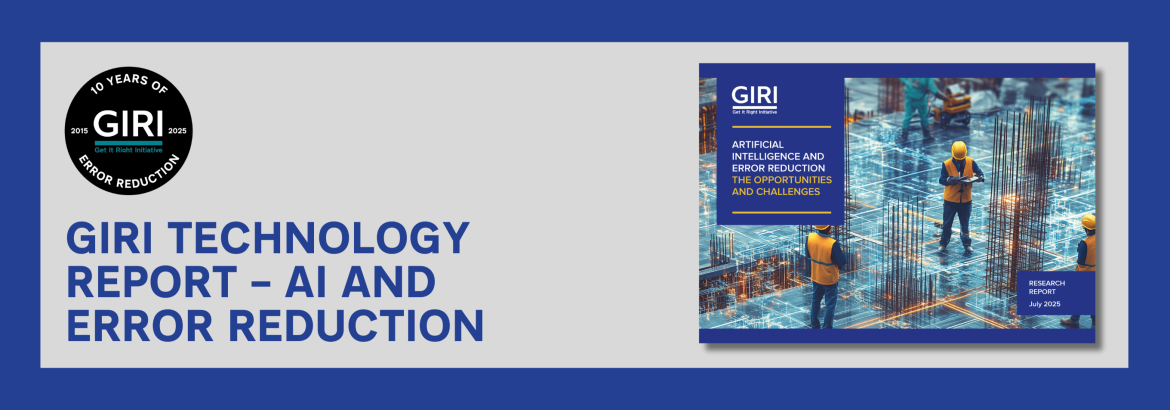New report explores how artificial intelligence can reduce errors in construction
15 Jul 25
A new report, Artificial intelligence and error reduction - the opportunities and challenges, published today by The Get It Right Initiative, explores how artificial intelligence can reduce errors in construction. However, the report warns that the industry needs to be alert to the risks AI itself may introduce.
The construction industry is facing growing pressure to increase productivity and quality, while managing workforce shortages and rising costs. Meanwhile, avoidable error costs the industry an estimated £10-25 billion each year.
Artificial Intelligence (AI) offers a compelling opportunity to address these challenges – improving accuracy, reducing waste and supporting safer, more efficient delivery. Research by McKinsey & Company in 2023 estimated that generative AI could add the equivalent of US$2.6 trillion to US$4.4 trillion annually to the global economy.
GIRI’s new report examines how AI can be used to help reduce error across the construction lifecycle, from project inception and design to practical completion and handover. The report also looks at where AI could introduce new risks in construction and how the industry should adapt and develop to manage these.
The report, written by John Priestland (chair of GIRI Technology Working Group) draws on industry interviews, case studies and desk research to identify how AI is currently being used, what barriers to adoption exist, and what strategies will help organisations and project teams to maximise its benefits. It outlines practical use cases, best practice case studies, and guidance on safe deployment. For example, AI is already being used to identify design conflicts, reducing the risk of costly errors and rework.
GIRI calls on contractors, software providers and policymakers to adopt assured, human-in-the-loop AI strategies to improve quality, reduce waste, and enhance productivity across the industry.
GIRI Executive Director, Cliff Smith said: “AI holds huge potential to improve decision-making, automate routine tasks and reduce avoidable mistakes. But it also brings new risks, especially if used without sufficient care, context or assurance. In highhazard sectors such as construction, we must tread carefully.
“This report offers useful insight, highlights practical applications, and encourages further engagement from both construction professionals and technology developers to ensure that we maximise the benefit that AI offers in our mission to reduce avoidable error.”

